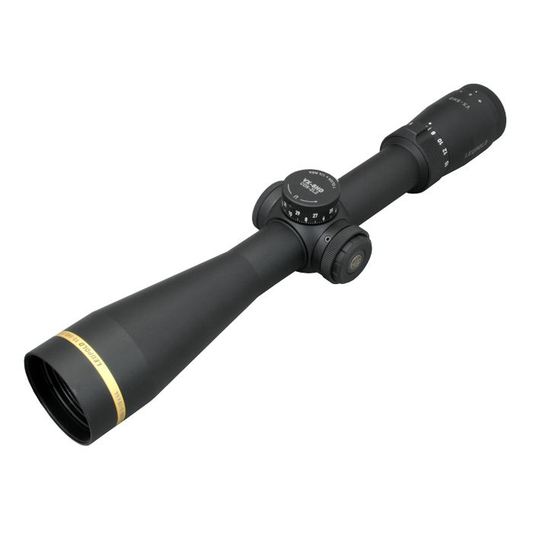

Leupold VX-5HD 3-15x44 Boone & Crockett CDS-ZL2 offers a versatile magnification range of 3-15x, making it suitable for various shooting scenarios. The rear focal plane Boone & Crockett reticle ensures accurate target acquisition, with subtensions that adjust seamlessly as you zoom. One-button reticle illumination enhances visibility in low-light conditions, while the motion sensor conserves battery life when the scope is not in use. Built with a 44mm objective lens featuring Guard-Ion coating, this scope is designed to withstand scratches and provides superior light transmission even in challenging environments.
Engineered for durability, the VX-5HD’s lightweight construction effectively disperses recoil energy, ensuring long-lasting performance. The Twilight Light Management System extends shooting time by providing up to 30 extra minutes of usable light and significantly reduces glare. With easy parallax adjustment and a fast-focusing eyepiece, this scope is user-friendly, allowing quick transitions between distances. Whether you're hunting or target shooting, this scope is a reliable choice for any outdoor enthusiast.
Key Features:
- VERSATILE MAGNIFICATION for adjusting to various shooting distances effortlessly.
- GUARD-ION COATING protects lenses from scratches, ensuring clear views in rugged conditions.
- TWILIGHT LIGHT MANAGEMENT enhances visibility at dawn and dusk, improving low-light performance.
- LIGHTWEIGHT DESIGN minimizes overall weight on your rifle, enhancing maneuverability.
- WATERPROOF & FOGPROOF construction allows reliable use in all weather conditions.
- FAST-FOCUSING EYEPIECE provides quick reticle adjustments for rapid target acquisition.
- BDC ADJUSTABLE TURRETS make windage and elevation adjustments precise and easy.
- COMFORTABLE EYE RELIEF of 3.8 inches reduces recoil impact for improved shooting comfort.
Technical Specifications
| Magnification | 3-15x |
|---|---|
| Objective Lens Size | 44mm |
| Exit Pupil | 14.6mm-2.9mm |
| Eye Relief | 3.8" |
| Field of View @ 100 Yards | 38.2 ft - 7.9 ft |
| Tube Diameter | 30mm |
| Turret Type | BDC/Adjustable |
| Turret Click Value | 0.250 MOA |
| Reticle Focal Plane | 2nd Focal Plane |
| Weather Resistance | Water/Fog Proof |
| Weight | 19.0 oz |
| Length | 13.5" |
| Max Elevation Adjustment | 75 MOA |
| Max Windage Adjustment | 75 MOA |
What's in the Box?
- Leupold VX-5HD 3-15x44 Boone & Crockett CDS-ZL2 scope
- Scope covers
- User manual
- Lens cleaning cloth
Customer Reviews
"The clarity and light management are a game changer for early morning hunts. Highly recommend!"
"Lightweight and durable. This scope has exceeded my expectations during long-range shooting."
"Easy to adjust, and the reticle is perfect for my shooting needs. Great value!"
FAQ
How does the VX-5HD perform in low-light conditions? The Twilight Light Management System significantly enhances low-light performance, allowing you to see clearly in conditions where other scopes might struggle. Users have noted an extra 30 minutes of effective shooting light, making it an ideal choice for dawn and dusk hunts.
How do I maintain the scope for longevity? Regularly clean the lenses with a soft cloth and lens cleaner to avoid scratches. Store the scope in a protective case to prevent damage from impacts. Ensure that the scope is securely mounted to avoid misalignment during use.
How does the VX-5HD compare with similar models? Compared to other premium scopes, the VX-5HD stands out with its lightweight design and exceptional light transmission capabilities. While brands like Vortex and Zeiss offer similar features, many users prefer the ergonomic controls and user-friendly adjustments of the Leupold for competitive shooting and hunting.
Similar Models
If you’re interested in enhancing your shooting experience, explore our range of Leupold scopes, including the VX-3i series for classic performance and the VX-Freedom for budget-friendly options. Each model is crafted to meet the demands of outdoor enthusiasts. Discover our full collection for a variety of premium rifle optics tailored to your needs.
You May Also Like
Here’s some of our most similar products people are buying. Click to discover trending style.








